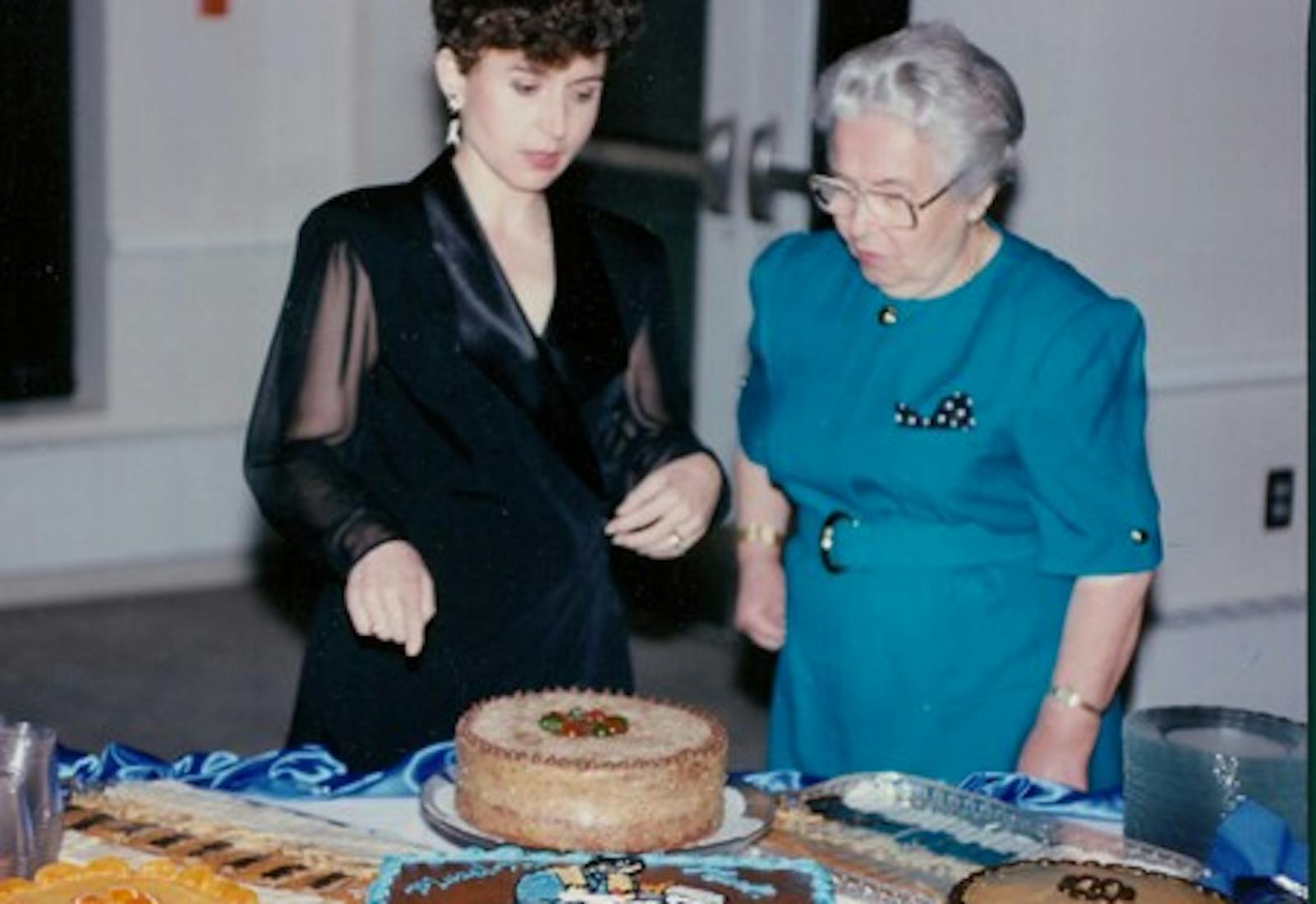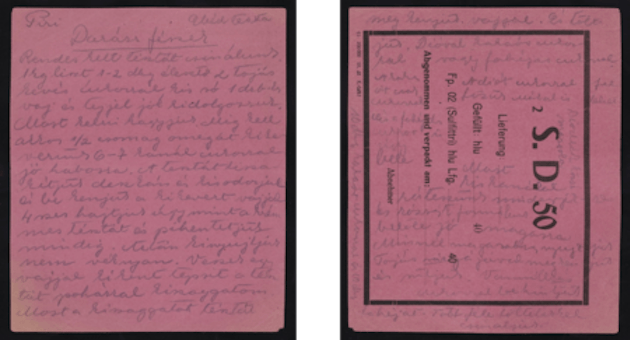Shared by Eva Moreimi


For Ilona Kellner, recipes were an act of resistance in the darkest of places. During the last year of World War II, when she was imprisoned at Auschwitz and later a subcamp of Buchenwald, Ilona (known as Ica) and the women she lived with were fed scraps, barely enough food to survive. But “in the evenings, they huddled together in the barracks and talked about food,” says her daughter Eva Moreimi. “Talking about food and remembering beloved family dishes gave them hope and a will to live. It was essential for their survival,” Eva writes in the memoir “Hidden Recipes.”
As a prisoner, Ica worked in the Hessisch Lichtenau munitions factory as a translator and messenger. While cleaning the factory one day, she found a stack of paper in the trash and discreetly grabbed them. On one side were munitions orders, discharge bills, inventories and memos, but the other was blank. Along with a small pencil she found, Ica started to write down the recipes the women shared in the evenings like one for gerbeaud slices, an elaborate Hungarian pastry made with layers of ground walnuts and jam. There was also sour cherry cake and a chocolate almond torte. She often wrote the name of the person who shared it, noting the name Piri next to a recipe for sweet buns called darázsfészek, which means wasp nest in Hungarian.
From August 1944 to the spring of 1945, Ica collected more than 600 recipes, which she carefully hid from the guards in a small pouch she made and tied to the inside of her coat. She carried them with her, even on a death march where on one of the final days before the women were liberated, Piri was shot by an SS guard.
“The recipes my mother wrote and collected during the Holocaust were very precious to her,” Eva writes. She brought them back to her hometown of Plešivec in Czechoslovakia and finally to the United States. “Throughout her life, when she was in the mood to bake, which was often, she looked through the recipe collection to help her decide what to make.”
By baking recipes like the darázsfészek, she kept the legacy of women like Piri alive. Today, Eva continues that tradition.
Editor’s note: Ica’s recipe collection is now housed at the United States Holocaust Memorial Museum in Washington D.C. You can explore them here.
